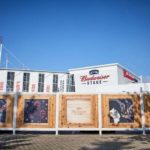Mazda Looks Back at Legacy of Innovation Starting with the 1967 Cosmo Sport 110S
Toyo Kogyo Corporation had needed to create a unique technology that would differentiate it among a rapidly globalising Japanese automotive industry in order to stay independent. In 1961, Mazda licenced NSU Motorenwerke AG and Wankel GmbH‘s rotary engine technology, sharing learnings with the German companies in hopes of making wider use of the engine.
Once the prototype rotary engine arrived in Hiroshima, testing began. Unfortunately, within the first hour of running, the engine seized. Mazda had wagered its entire existence on this one engine technology and so failure would not be an option. But early impressions meant there was much to be done to keep Mazda afloat. Knowing how imperative the success of the rotary engine would be for the company, Chief Engineer Kenichi Yamamoto assembled a team of Mazda’s most talented engineers known as the 47 Samurai to make the rotary engine viable.
After a highly lauded debut at the 1964 Tokyo Motor Show on 30 May 1967, the Mazda Cosmo Sport 110S, the world’s first production twin-rotor, rotary engined car went on sale in Japan. It was Mazda’s first sports car and all the more newsworthy because the company had been known only for its small passenger cars and work trucks to that point. Its low shape complemented the compact dimensions of its two-rotor engine.
Just 1,176 production Cosmo Sports would be built but its legacy would stretches much further. From the earliest races such as the 84 hours Marathon de la Route in 1968, Mazda has never stopped challenging its engineers and designers to keep improving their craft.
Those efforts spawned championship winning motorsports programmes all over the world as well as leading the way for subsequent sports cars that focused on lightweight performance over brute strength. The highest point of Mazda’s development of the rotary engine was in 1991 when the quad rotor powered Mazda 787B won the famed 24 hours of Le Mans. During its production, more than 1.99 million rotary engine vehicles were produced, from sports cars to sedans and even a 26 passenger bus. Much as with recently Mazda cars and crossover SUVs, hashiru yorokobi – exhilaration, joy and wellbeing from driving continues to be a critical part of what makes Mazdas what they are.



Average Rating